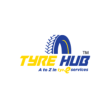
Rotating the tyre is important for car maintenance. If you rotate the related wheels and tyres on a deliver axle, the tyre wear is the same. The result is nearly ever balanced traction and periodic handling. Most tyre warranties require the tyre to be rotated on a correct mileage schedule. And many tyre manufacturers recommend turning between 3,000 to 5,000 miles.
WHAT IS TIRE ROTATION?
Rotating a tyre means changing the position of every tyre on your vehicle periodically. You should rotate your tyre as recommended by the vehicle producer, or every 5,000 miles. For many of you, that will mean when you change the oil in your vehicle.
Rotating your tires regularly gives you a good chance to visually check for damage, check their air pressing, adjust them if you are experiencing vibrations, and check the depth of their movement.
WHY IS TIRE ROTATION IMPORTANT?
Not all of your vehicle’s tyres play the same role. For example, on most vehicles, the front tyres do most of the steering, when the rear tyres follow the front. There may also be a contrast in braking and weight distribution on your vehicle, which will bring uneven stress on the tyres depending on their position. A car with a front engine will place more strain on the front tyres, as this is the heaviest part of the car.
Other factors such as poor wheel alignment and unbalanced tyres can also contribute to tyres in a variety of conditions that cause stress more quickly than others causing the tyres to stretch. Worn suspension can adversely affect the distribution of weight on the vehicle, increasing wear during braking.
All of this means that the tyres will wear unevenly. Due to most turning the front tyres will wear faster on the edge, while the rear tyres wears additional evenly. This uneven wear can lead to early replacement of the tyre.
Rotating the status of your tyres causes private tyres to wear out additional than others. Eliminating these irregular wear patterns distributes the load between all four tyres and dramatically increases the life of your tyres.
What is the Proper Tire Rotation Pattern?
The best tyre rotation pattern for your vehicle rely on what type of tyre you are using, whether your vehicle is front, rear, all or four-wheel drive, whether your tyres are position or non-position.
Whether your tyres are the same size at the front and rear of your vehicle, and you have full-size spare that can also be rotated in contrast to the temporary spare.
For all these possibilities let’s take a look at the tyre rotation pattern recommended by the tyre industry standard organization.
Tyres that are of uniform scale and non-directional:
Tire Rotation Pattern:
X-Pattern
The X pattern involves moving the front tyre to the rear and crossing it. The front left goes to the right of the back and the front right makes an “X” to the left of the back. This is the standard pattern used on a variety of vehicles.
Rearward-Cross Pattern
Other geometry that you can explore is the rear rearward-cross design, where the rear tyre takes place in the front as it is and the front tyre takes in the rear but in a crossed way. This can be used for RWD (Rear wheel drive) and 4WD (Four Wheel Drive) vehicles.
Forward-Cross Pattern
The forward-cross is the opposite of the rear cross pattern. Here the front tyre goes to the rear, and the rear tyre crosses to the front again crossed manner. This design can be used on FWD vehicles.
Side to Side Pattern
This pattern is for cars with dissimilar sets of front and rear non-directional tyres. This pattern is so simple as it sounds. The side-to-side pattern put back the left tyre to the right and the right to the left, both front and rear.
Front to Rear Pattern
This pattern only applies to directional / wheels/ same size tyres. Here the front tyres on both sides happen in the rear.
Rotating the Spare-in
Five tire rotation – spare tire
If your vehicle has a full-size, non-directional spare tyre and a wheel that is about the same size as your four main tyres and wheels, you may want to consider the following rotations. Pattern to wear all five tyres evenly. This is especially momentous for four-wheel drive and all-wheel drive vehicles, as if you required to use your spare tyre and wear it differently from your other three tyres, it can put inept force on your vehicle’s drive train. Is. Difference in tread depth.
Forward cross for front-wheel drive
If your vehicle has front-wheel drive and you have a non-directional tyre with a matching spare, the upper left pattern can be used. Goes to the front position opposite the rear tyre. The left front tyre rotates in the left rear position. The spare tyre goes to the right rear fit in and the right front tyre becomes spare.
Rearward cross for rear-wheel drive
If your vehicle is a rear-wheel or 4-wheel drive with non-directional tyres and full-size matching spare, the above pattern can be used. The left rear tyre rotates to the left front position. The right rear tyre rotates in the right front position. The right front tyre rotates in the left rear position. The spare tyre goes to the right rear fit in and the left front tyre becomes spare.
About the Creator
Tyre Hub
TyreHub is the one stop solution to buy Car Tyres, Bike and Activa tyres online with the best price offers in Ahmedabad and get them delivered at your doorstep. For more information visit https://www.tyrehub.com/ or call us 8141335551






Comments
There are no comments for this story
Be the first to respond and start the conversation.